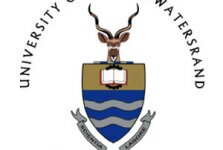It is being hailed as counter culture phenomenon with spin-off health benefits that takes inspiration from the Rhône valley in southern France. In the ‘Swartland’ (black country) region of South Africa, wines are being produced as naturally as possible, in soil dense with nutrients. It comes out ‘not woody, not too sweet, not too strong’, and is also harvested a month early to do away with the heavy, high alcohol content for which South African wines are known. Whatever its benefits, alcohol is a also a known toxin, so reducing its content in a wine that is still a delight to the palate makes it a win-win all round. MS

There’s a revolution happening in South Africa’s winelands where a handful of young impassioned friends are turning their backs on the very practices that have made the country’s wine industry such a success.
Not for them the standard locales that make up the wine tours of the region: Stellenbosch, Franschhoek, Constantia – big farms with big production of big, fruity wines, all on Cape Town’s doorstep.
The new land of conquest is drier, healthier. The vines are thirsty for moisture and the farms empty of tourist buses. This is Swartland – the “black country”, about 100 kilometres (62 miles), or an hour’s drive inland, north of Cape Town.
“The basic thing about this area, why I came here, is the soil,” says Eben Sadie, 42, a former surfer and the first of the renegade winemakers to settle here in 1997.
“When people think wine, they see estate. But wine is all about the soil and the site.”
The “terroir”, he calls it – soils that remind him of the terroirs he worked in his youth during harvest time in the best wine regions of Europe, soils that imprint on the wines to give a truly regional flavour, a sense of place. And with the terroir comes an array of old vines, just waiting to be rediscovered. Cinsault, Grenache and Chenin Blanc. And Syrah, king of the Swartland.
Over the years, Sadie’s friends joined him in this sloping mountainside landscape of olive trees and wheat fields – and a charming village, Riebeeck Kasteel, as its capital.
Counter-culture phenomenon
Xavier Didier, a French sommelier based in Cape Town, calls it a counter-culture phenomenon.
“They wanted to get out of the usual commercial channels of tourists and mass production, and this New World style of wine, the fruits, the alcohol, the Robert Parker flavours.”
Instead, their inspiration is the Rhône valley in southern France: wines produced as naturally as possible, not woody, not too sweet, not too strong, harvested a month early to do away with the heavy, high alcohol contents South Africa’s wines are known for.
“We want people to buy our wines, and to drink a bottle and to want to drink another bottle,” says Chris Mullineux, 38, one of Sadie’s band of merry men.
Grouped together as the Swartland Independent Producers, they launched their rebellion in 2010 to the outside world through “Swartland Revolution”, an annual fair which now attracts connoisseurs from around the world.
It’s a swapping of each other’s latest creations, of experiments and limited editions, of red stars and socialist logos – all this in a region which up until recently was known for mass production of cheap wines.
Here, the priciest bottles can sell for 700 rand ($60, 50 euros) – a small fortune for wine in South Africa. And yet, for all their insurrection, the rebels are now the darlings of the establishment.
This year, Sadie was named South African winery of the year by Platters, the country’s leading wine bible. It first won that prize in 2010 and Mullineux took it last year.
“We usually keep the best wines for ourselves and sell the rest,” jokes 42-year-old fellow Swartland revolutionary Adi Badenhorst. “We’re just a couple of friends who can be themselves.”





